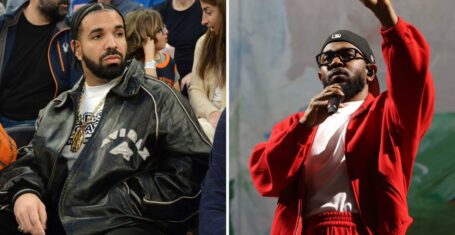
BNOC: Bigotry on Campus?
Why do hardly any women make the top 10 for BNOC?
Cambridge, gird your loins: it's time to sell your soul, lose friends, and celebrate your inner attention-seeking diva – the BNOC list is out next week! Do you have what it takes to make the list? Do you have the chat, the banter, the rep? Or do you just have a penis?

your fave opinions edz have girded their loins for the upcoming statistics
Yet again in the name of long-suffering 'investigative journalism', this writer has scoured the BNOC lists of yore (read: of the past 5 years), and have now reached the conclusion: the BNOC list is S E X I S T. Which just is not in the spirit of good banter.
The BNOC list has run 3 times so far: once back in the mists of 2012; and for the past two years, 2016 and 2017. In this time, the gender ratio has been skewed towards men – averaging at about 52:48 (Brexit!) – but this is largely due to the male-dominated Natsci Tripos, which is the largest course at Cambridge, and an under-represented group in BNOCdom, which is filled by Humanities and Arts students (notably female-dominated subjects, with the exceptions of History and Law). Hypothetically, this slight imbalance should therefore not influence the BNOC list too much.
In spite of this, the gender imbalance on the 3 lists is striking. Out of a total of 150 names, 29 are female, meaning just 19% of 'BNOCs' are female. This figure is boosted by 2012's list, which had 15/50 female BNOCs, giving the highest percentage of female BNOCs, at 30%. 2016 and 2017 presented 6/50 and 8/50 female BNOCs respectively, with female representation at 12% and 16%.

Look at all that misogyny
Female representation in the Top 10 was, interestingly, a little more equal: 4/10 in 2012, 3/10 in 2016, and 5/10 in 2017 – giving an overall percentage of 40% female, more than double than in the full list.

I'm no mathmo, but I don't think 50% of the population = 30% BNOC TOP 10?
Why are women underrepresented in this claim to Cambridge fame? The BNOC list is constructed of individuals for various reasons: achieving top positions in Cambridge institutions, such as the Union, CUSU, and College JCRs; women mostly came from this category – examples being Lola Olufemi, the CUSU women's officer and only woman to have appeared twice in the top 10, as well as former Union Presidents Charlotte Ivers and Kate Dunbar. It was in less salubrious BNOC areas that women were underrepresented: general 'banter' supplied the majority of candidates, who were majority male – whose springboards to fame were anecdotes celebrating fun and outlandish behaviour. One guy entered at number 17 for 'dressing as the Follies of Neoliberal Capitalism'; number 35 'literally [had] a t-shirt with his face on it'. Of course, the majority of BNOC men were also present for their success in Cambridge institutions, rather than general #banter, including current Union President Jonah Surkes.

Some women did manage to sneak in to the BNOC list via the Union
Although the BNOC list is, essentially, a pointless circle jerk of hacks and cocky banter merchants, it is also a reflection of a problem facing the perceptions and positions of women within society more generally.
Firstly, with the exception of the top candidates, such as Lola Olufemi, there is an imbalance of women being recognised for their successes in Cambridge organisations and institutions. Several men were listed for participation in college activities – including the 'benevolent dictator of Trinity' – or for their prowess in Sports. Although there was female representation in both of these categories, it was certainly lower than that of the men.
Secondly, there was the more nebulous 'lack of chutzpah'. Whilst many men were nominated, and received votes for, their entertaining behaviour, there were very few women nominated solely for 'good banter'. This is symptomatic of 'lad culture', which celebrates outlandish, jokey behaviour 'for the ladz'. Basically, it's a ridiculous, fun list; but representation is important, and women can be recognised for being silly and solipsistic too (and should be encouraged to be so).

The 2017/2018 Footlights committee has brought about 'a golden age for women in comedy at Cambridge'.
Women had to work harder to achieve representation, whilst more average men dominated the list. This is a common complaint of many women in the workplace; if this cannot be resolved at University, this disparity will continue to be fed beyond university life.
Ruby Keane, Footlights President and full-time woman, attributes the disparity to: 'subtle misogny (both internal and external)… because society says that women who celebrate themselves are just self-obsessed and big headed, and it's seen as an unattractive quality, whereas men are simply seen as confident.' (she also adds to take the time to nominate 5 women for the 2018 list.)
It is baffling that more women are not included on this list. Cambridge is full of exciting, funny, clever, high-achieving women – every bit as much as the boys. Happily, we are in entering a golden age of gender equality in the largest Cambridge institutions; with women at the top of the Union, CUSU, Varsity, Tab, and Footlights, hopefully this progress will be reflected in 2018 .









































